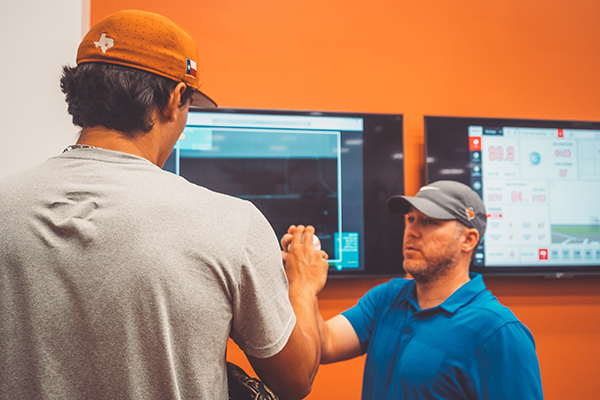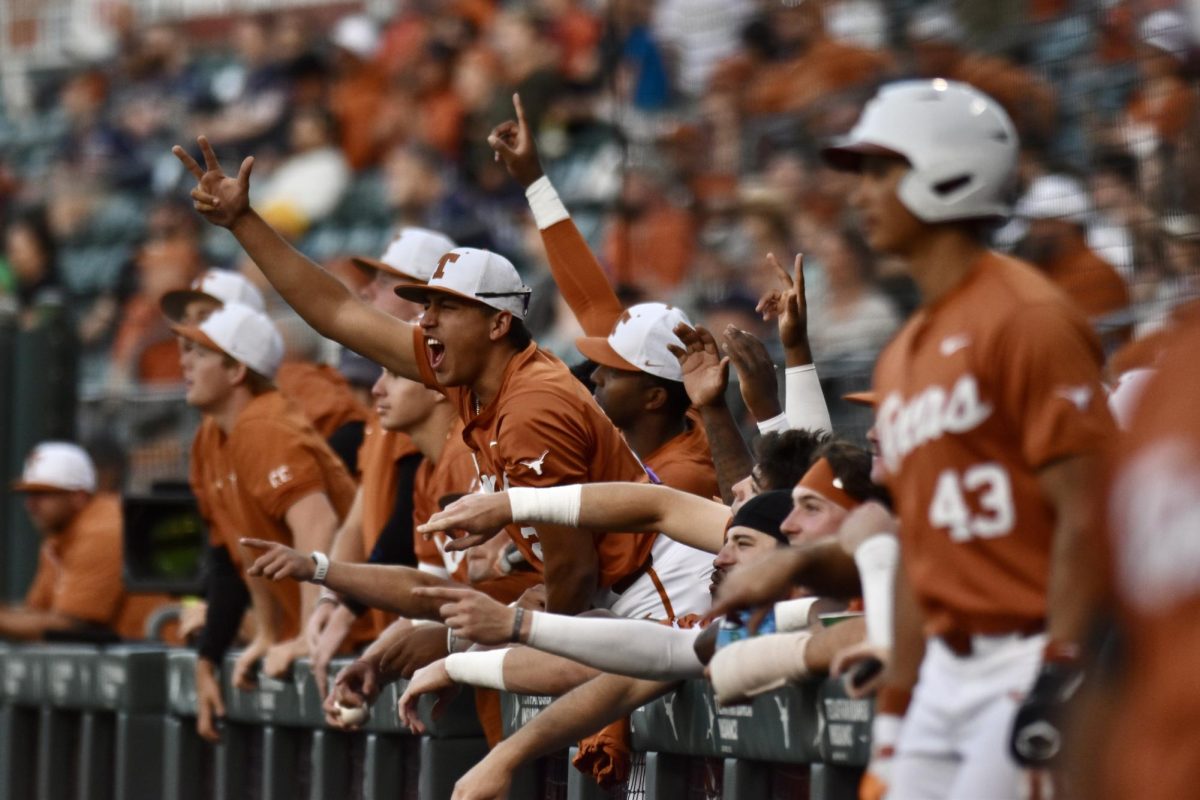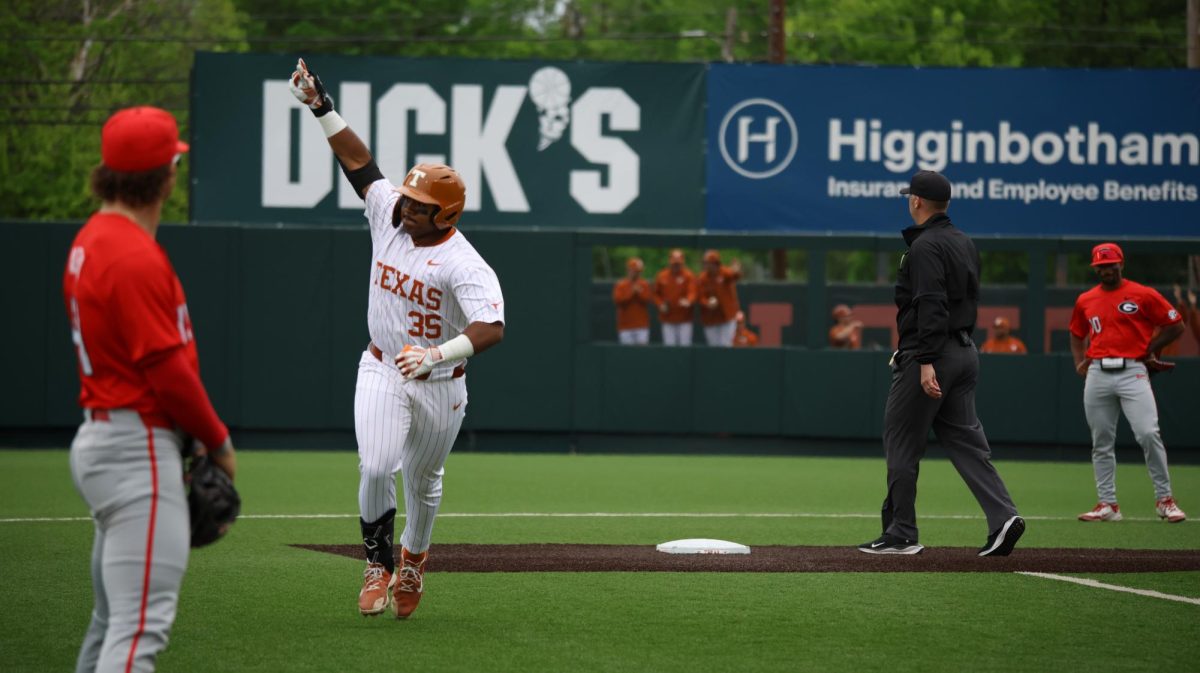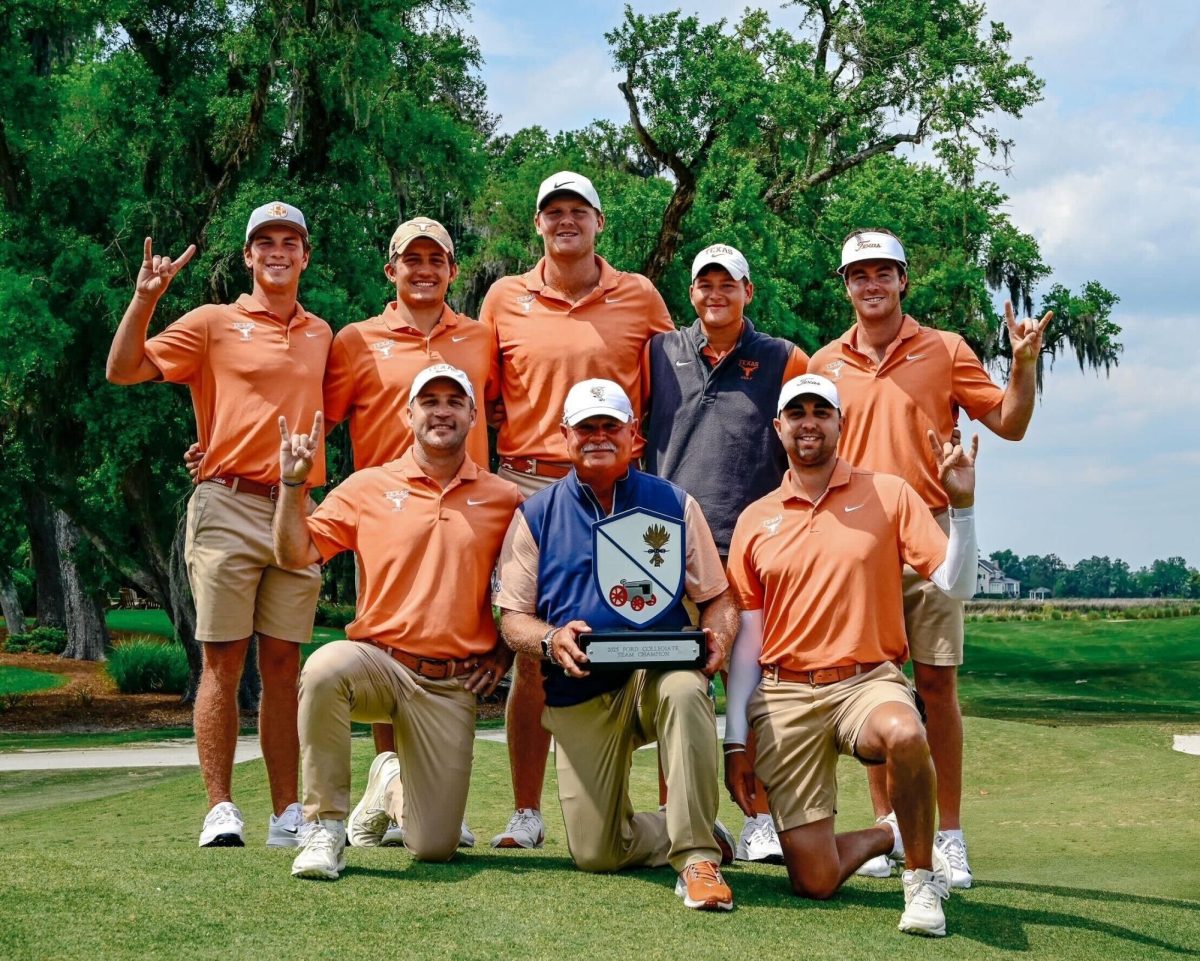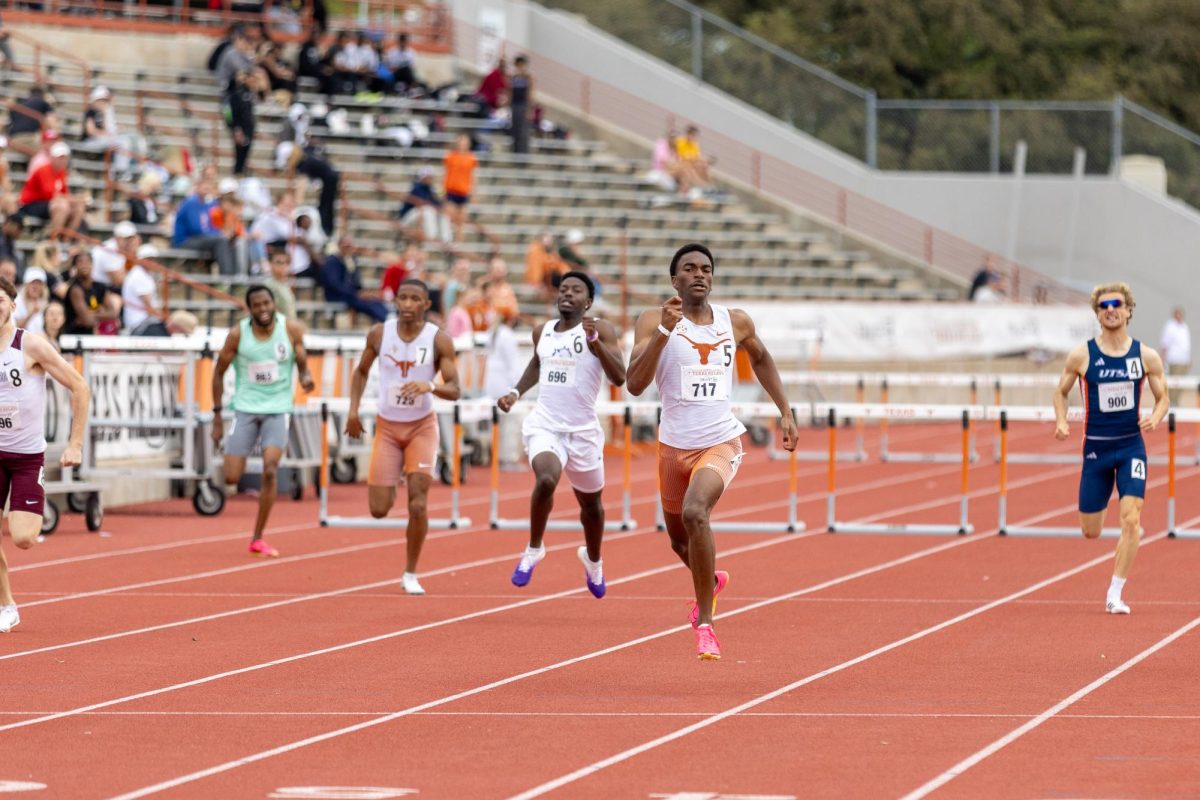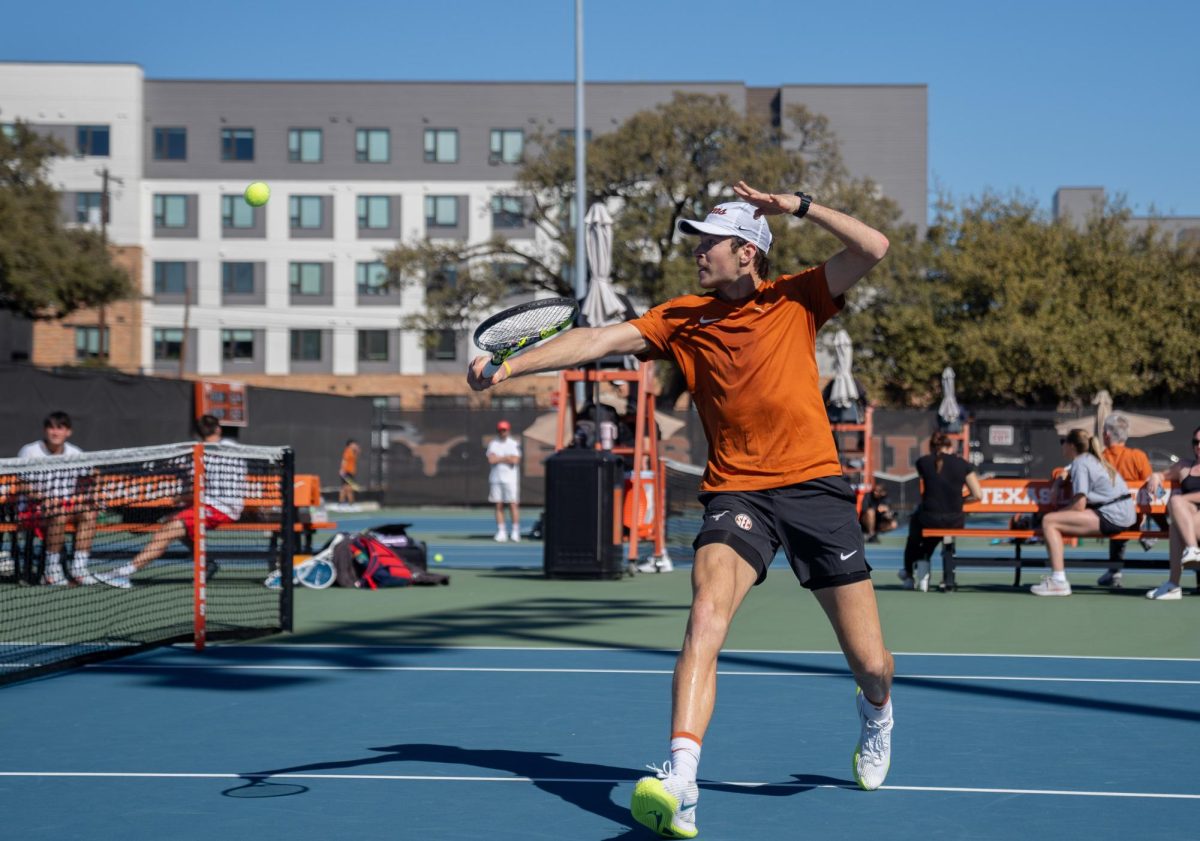After Ryan Monsevalles worked with the Texas baseball team as a student video manager, the experience opened up a world of opportunities, including a job with the Toronto Blue Jays. But when he returned to UT in 2019 to lead the baseball analytics team, he wasn’t sure how interested current students would be in joining.
“I didn't really know how many people would apply,” said Monsevalles, Texas baseball director of player personnel and analytics. “After talking to somebody at James Madison (University), I realized this guy was pulling 100 candidates at a much smaller school, so how many kids can we get at Texas?”
Last spring, Monsevalles grew his team from three student interns and volunteers to seven. His workforce creates scouting reports, charts games and other projects.
UT alum Dylan Harkrider was the first student to join the team after Monsevalles graduated from Texas State University in 2017. For the past three years, Harkrider has been a constant in the group of students who work in the press box and chart every single pitch thrown.
“At the beginning, it was mostly just charting games and charting opponent games,” Harkrider said. “That was our only responsibility because our pitching coach heavily relied on video.”
However, with facility upgrades and a new pitching coach, the students have grown into larger roles. In the spring, baseball head coach David Pierce introduced a new way of relaying signs to baserunners and coaches: wristbands that players and coaches will wear with predetermined signals.
Ian Arzt, Texas baseball analytics and video student manager, created his own method to generate signs, eliminating potential sign stealing.
“Basically, it’s just all random,” sport management senior Arzt said. “No team will be able to pick it up, no matter how hard they try, because it's just literally based on random computer code.”
The new signs are one of many projects the coaching staff has entrusted with the students, going beyond their daily roles of scouting reports and charting games.
“There's no way any of the coaches could trust me in my first couple weeks,” Harkrider said. “Over the past three years, we've all built relationships with coaches, with the players, with the strength coach, with literally every one of the staff. They've relied on us a lot.”
Another project developed in the fall of 2019 was sorting through pitching data and working with pitchers in individual bullpens based on the numbers. In those individual bullpens at the J. Dan Brown Family Player Development Center, pitchers will be able to see statistics of a pitch right after they throw it on a television screen.
With pitch design and tracking technology, the pitch can be analyzed with underlying statistics like spin, spin axis and spin efficiency, measurements that help break down what makes a pitch harder to hit, according to Artz’s blog.
“The bullpen sessions help adjust those numbers, like where we want a pitcher’s slider, the spin and the spin axis,” Arzt said. “They can see their numbers as they pitch and just see if this pitch looks off.”
The expanded data and further introduction hasn’t just helped the pitchers, but also students like Harkrider and Arzt, who gain valuable experience toward their goal of working in professional sports. Experience helped Arzt land an internship with TrackMan before it was canceled due to the pandemic.
“Opening up the program to more students is probably the next step in developing the program,” Monsevalles said. “And if I keep giving back to the University that did so much for me, I’m more than willing to do that.”

